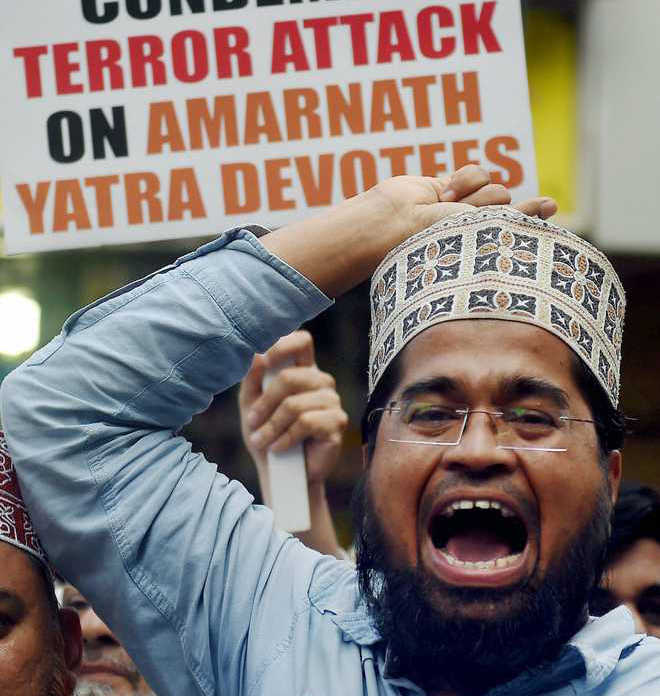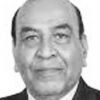So Hafiz ‘Bhai’ now wants to further legitimize terror, its employment as a strategic tool, continue escaping the ban placed on him by various international organizations and nations and exploit the emerging political space in Pakistan. The formula for this is simple; just float a political party. Hafiz Saeed, the man in question here is commonly known as the Chief of the Lashkar e Toiba (LeT) now called the Jamat ul Dawa (JuD), after the US and later the UN bans placed against him. The proposed party is to be named Milli Muslim League Pakistan. What is all this about why is he doing this?
It is not difficult to assess Saeed’s intent but a little background always helps. A nobody, he was picked out by General Zia ul Haq in early Eighties to be an Islamic studies teacher and thereafter made his way to Saudi Arabia where he came under the influence of returning mujahideen from Afghanistan and the Ahle Hadith sect. On return, along with Abdullah Yusuf Azzam, the mentor of Al Qaida he founded the Markaz Dawa-Wal-Irshad (MDI). Azzam was a rabid Palestinian heavy on jihad and Saeed’s orientation can be traced to him. In all probability the MDI was part funded by the ISI and part by elements of the Ahle Hadith, no doubt with sponsorship of Abdullah Azam. It became the ideological element for the launch of so called jihad in J&K. In 1990 it gave rise to the Lashkar e Toiba (LeT) again inspired by the needs of the ISI based on the grandiose plans of Zia ul Haq to launch a war of a thousand cuts against India. The LeT formed the militant arm of the MDI and has undergone change of name more times than one can remember due to international bans and sanctions against it.
It has taken long for Saeed to realize that he could be a rabble rouser and a ‘friendly terrorist’ for the larger Deep State as long as he was useful to the ISI. With the changing political environment of Pakistan, uncertainty about the political dispensation after next year’s general elections and the fickle state of the world order, wherein alliances are yet un-cemented, being just the head of a friendly terrorist organization may not be enough in terms of lasting capability. The idea that his organization, with its ideological arm of the MDI and the militant arm of the LeT (JuD) would exercise no genuine power and continue to act at the whims of the state has dawned on him rather late. Possibly his faculties were dulled by the street power that the MDI can today exercise in terms of recruitment rallies and fund raising campaigns. This realization has led him to believe that without a political face to his organization he would always be at someone else’s mercy. Direct power can only be exercised through the political route and an opportunity seems to be emerging on Pakistan’s political canvas. The Bhutto inspired Pakistan People’s Party (PPP) is a pale shadow of the past and the Pakistan Muslim League (PML), the property of the Sharif family, has clearly got the ire of the Pakistan Army. Imran Khan’s Tehreek e Insaaf (TeI) hardly has pan Pakistan reach and Imran’s own personal reputation is questionable. In Oct 2016, Pakistan daily Dawn reported that a PML-N lawmaker, Rana Muhammad Afzal had questioned why Saeed was being mollycoddled at the cost of Pakistan’s international image and the inability to withstand criticism of the JuD’s role in Kashmir. Saeed’s appreciation of the situation probably led him to conclude that before many more Rana Afzals emerge to question his credentials it was safest to create a political space for himself.
It is unknown whether MDI/JuD combine can pass muster to register as a political party in Pakistan’s yet to mature political system but clearly what Saeed is looking for is an escape route and greater legitimacy to protect his fiefdom which he has created with much care. If a Prime Minister of the main party from heartland Punjab could be brought down by the Supreme Court so could Saeed’s empire wither at orders of someone in authority who found him no longer useful.
There is no guarantee that Saeed’s move will take him through to a position of political legitimacy. If it does then the next question will be whether it will translate into seats. Pakistan’s electorate has shown a penchant for electing ‘feudals’ but not radicals. However, in five years much has changed in the Islamic world and after Mumtaz Qadri gained iconic status as the assassin of Punjab Governor Salman Taseer what can one say of Pakistan and its electorate.
For India, the acceptance of the JuD/MDI as a political party under the Pakistan Constitution will give one more piece of evidence of the state involvement in the proxy activities in Kashmir. However, given the geo-strategic importance that international players accord to Pakistan, the evidence is likely to remain lost in the maze of the grey zone that Pakistan has successfully created in relation to its dubious activities.
























































 AP
AP



 REUTERS
REUTERS



























































